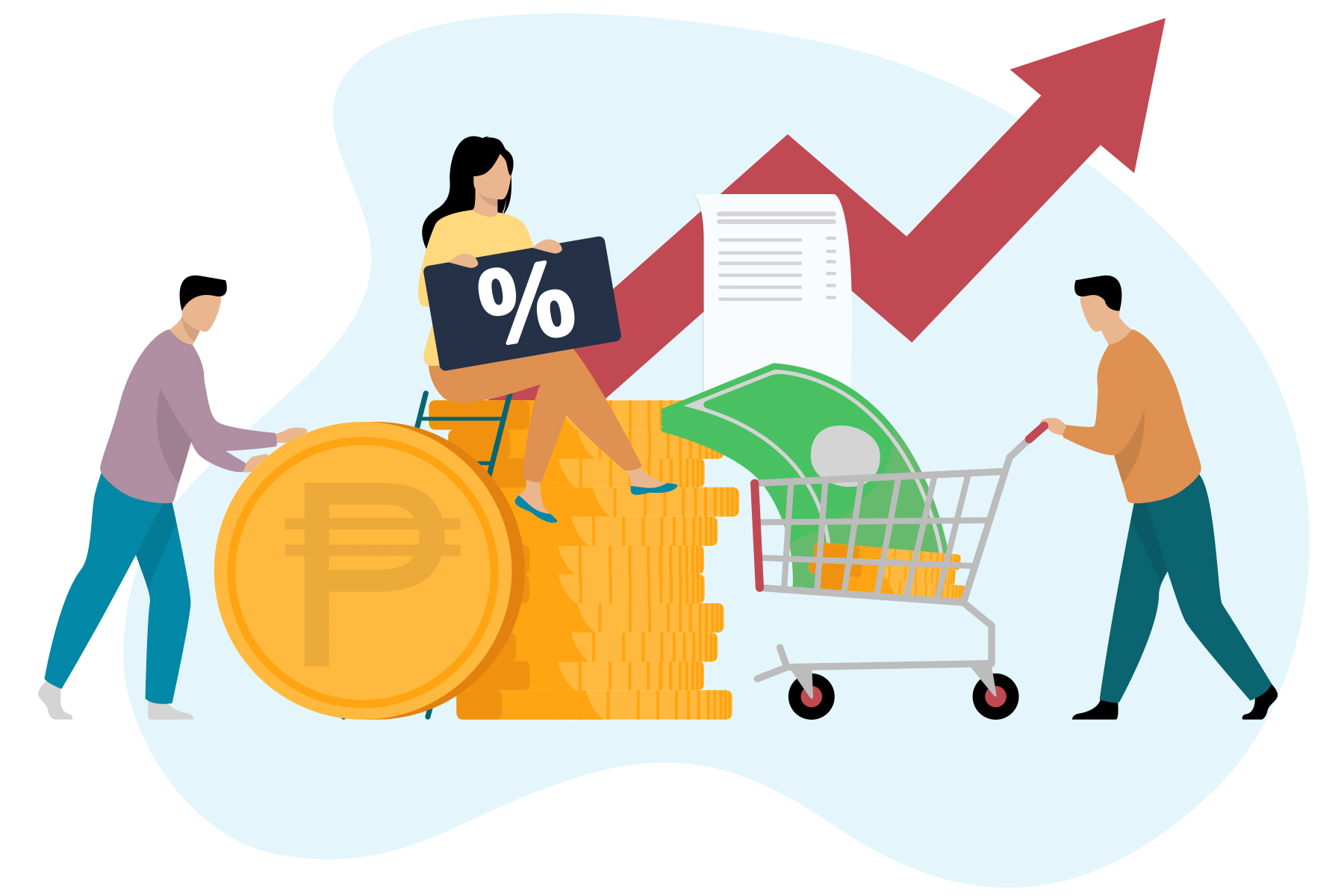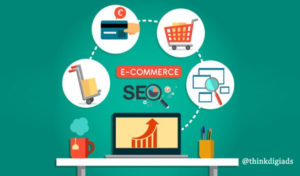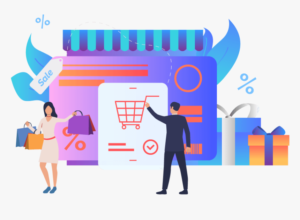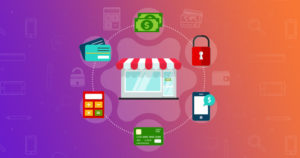In the aftermath of the pandemic, eCommerce, once a haven for discounts and low-cost items, has turned into a continuous source of inflation. The effects of inflation on eCommerce businesses seem quite threatening.
As a result, some businesses may suffer a drop in sales as demand falls. Could this mean a drop in revenue, a drop in profit, and a cash shortage in your business?
eCommerce has historically been remarkably resistant to inflationary pressures, even during economic booms and busts. Between 2015 and 2019, the average internet price fell every year.
With the massive growth in online shopping, tracking online prices has become more important to measuring inflation.
In this article, we will explore the cause of inflation, its effects on small businesses, and what you as a business owner should do to turn financial pressure into growth opportunities.
Table of Contents
What is Ecommerce Inflation?
Here’s an easy definition that is simple and easy to understand:
Inflation is an economic term describing the increase in the prices of goods and services over time.
In other words, inflation results in a wide range of products and services getting more expensive; in turn, this could mean people will buy less.
The same definition is true in eCommerce, although the concept has not really been relevant in this industry—at least up until the pandemic hit. In fact, prices in eCommerce over recent years have actually been trending down (deflation) rather than up.
According to the Adobe Digital Economy Index, as of July 2021, online prices are up 3.1% year-over-year, which is a total reversal of the long-standing trend in declining prices of eCommerce products from 2015 to 2019. During this time period, prices were declining quite predictably at an average of 3.9% every year.
What is Causing Ecommerce Inflation?
Inflation can be caused by a variety of factors, the most common of which are demand-pull and cost-push inflation. The causes of inflation in 2022, on the other hand, are a little more complicated and have been influenced in part by the government’s reaction to the epidemic.
Demand-pull and Cost-push inflation, both are responsible for a general rise in prices in an economy, but they each work differently. Demand-pull conditions occur when demand from consumers pulls prices up, while cost-push occurs when supply costs force prices higher.
COVID Caused an Imbalance in Supply and Demand
Online Inflation
The recent rise in the Consumer Price Index (CPI) can be attributed to a number of things, one mostly being the COVID-19 crisis.
Energy costs have shot up by 28.5% over the last year. When the whole globe was trapped at home due to a pandemic, people became accustomed to ordering everything via their phones or computers.
But what is the correlation? Isn’t it great that people are spending more money now than last?
What occurred was that throughout the 2020s, stay-at-home orders caused everything to come to a halt: no one went out or bought anything, factories and businesses closed, and output came to a halt.
People began to return to their usual purchasing habits as the economy began to recover, overnight, demand for items surged.
How does inflation affect businesses in general?
Businesses are directly impacted by inflation in two key ways:
- When prices increase, businesses experience increased raw materials, manufacturing, and overhead costs. While a business could remain relatively unaffected by transferring all costs to consumers, in reality, businesses will absorb part if not the majority of the increased cost to avoid losing customers.
- When inflation rises, the purchasing power of consumers erode – in simple terms, they can now buy fewer goods and services than they used to. This means businesses will record lower sales, reducing the total revenue of the business.
Does inflation affect all businesses the same?
Each business experiences the impacts of inflation differently. Largely their experience depends on the nature of their market, the types of products and services they offer, and their brand strength.
a. Essential goods and services are less impacted than non-essential
In general, consumption of essential goods and services is unavoidable. Thus, consumers will still spend on essential goods and services, resulting in a much lower price elasticity of demand. Consumers are more likely to reduce consumption of non-essential goods when prices rise.
b. Markets with fewer sellers see less of an impact
In a market and industry with an abundance of sellers, an increase in prices represents the risk of losing customers to another competitor that is willing to remain at the same prices.
Markets and industries with few sellers have higher pricing power than concentrated markets with many sellers. Simply put, when there are fewer competitors within the market, consumers have fewer alternatives. Thus, businesses that sell within a market with few alternatives may experience a lesser impact than those in markets with an abundance of sellers in times of inflation.
c. Brand power reduces the negative impact of pricing increases
Consumers pay more for branded goods as compared to general goods. Brand power translates into pricing power. Products associated with high brand power have considerably more inelastic demand, making consumers more accepting of a price increase.
5 Tips to Manage Inflation
Fortunately, there are several things you can do to protect your small business from the harmful effects of inflation.
1. Strengthen your pricing power.
Every business affected by inflation will be expected to pass the price increase on its customers. Even if inflation does not affect you in the long run, improving your pricing power increases your competitive market position.
Here’s how we suggest you boost your pricing power:
- Determine what sets you apart from the competitors and focus on that product, service, or marketing message.
- Enhance your offering’s individuality by improvements, bundling, de-bundling, or branding.
- In your selling and marketing tactics, target clients who are less price sensitive.
- Reduce contract durations or include variable pricing mechanisms, such as commodities fees, in your contracts.
- Invest in your customer experience by hiring additional people, improving your training, or improving your sales procedures.
- Integrate your services vertically to create a one-stop store.
- Offer freebies, memberships, or warranties in exchange for your services.
2. Pay attention to your expenses.
Now is the moment to reduce non-essential spending. Examine your expenses carefully and consider strategies to save money.
Every penny you save will help you boost your bottom line and improve your cash flow.
You should always strive to improve your processes and reduce wastage to spend less and win more. That’s exactly what a strategy, called lean management, is all about.
3. Evaluate your supply chain risk.
Businesses cannot afford to overlook the supply chain. There are whole books dedicated to supply chain risk management, but here are a few important weaknesses to watch out for during inflation:
- Single-supplier dependencies
- Bulky, heavy, perishable, or hazardous materials that are difficult or expensive to store.
- Materials you run through a JIT supply chain
Consider taking the following actions to mitigate high-risk supplies:
- Establish alternate supply chains (not just alternate suppliers)
- Establish an expedite supply strategy, such as a domestic alternative to a foreign supplier.
- Consider stockpiling critical supplies with low holding costs
- Review safety stock levels at all levels of JIT supply chains
- Engage in commodity hedging, where appropriate
4. Consider measures to increase sales.
Targeting your marketing efforts on your existing consumers is one approach to boost sales.
Many business owners believe that marketing to existing clients is a waste of money since they do not see a return on their investment, therefore they only promote to new clients. But nothing could be farther from the truth.
According to Forbes, acquiring a new client is 5 times more expensive than keeping an existing one. Furthermore, boosting client retention by 5% can increase earnings by 25%, even up to 95%.
Try out this method. You might be astonished by the outcome!
5. Plan ahead for your cash needs
Examine your finances thoroughly. Will you require more funding in three months? How about six months later?
Don’t put things off till the last minute. Instead, think about getting a business loan right now.
Investing in your business now will help you to prosper today and withstand the storm of tomorrow.
With low interest rates and a high likelihood of inflation, now is a fantastic moment to take out a loan! You will most likely repay the loan with less money than you borrowed.
Just be sure you have somewhere to put your loan money.
Preparing your small business for inflation.
Inflation can be bad for businesses. You may face rising costs and declining profits. But there are ways to overcome the adverse effects of inflation. Focus on increasing sales and cutting costs.
Maintaining a healthy inventory is one of the best solutions for online businesses to counteract the rising prices, longer lead times, and unpredictability of the supply chain by stocking at least 3-to 6 months of inventory.
No matter what industry you are in, you need to meet regularly with your finance team to talk about business financial strategies.




